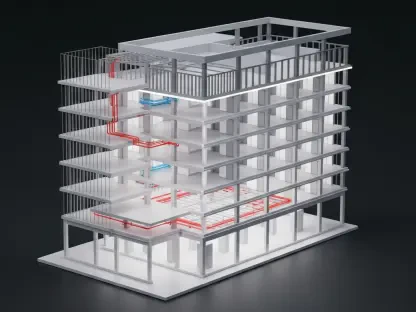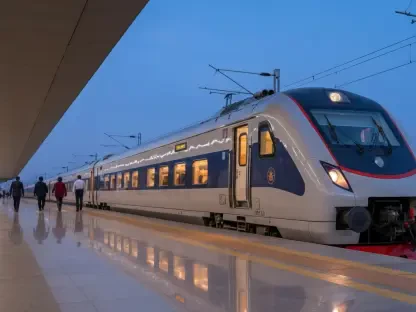The advancement of seamless hotel system integration technology marks a turning point in the hospitality industry, promising to transform how hotels operate and serve their guests. As the industry aims to harness real-time, accurate data across disparate systems, the quest for comprehensive integration becomes imperative. This review unravels the journey of this technology, delving into its evolution, key features, and its ripple effect on the hospitality landscape. This incisive overview will examine the current status, trace significant developments, and ponder its future potential.
Understanding Seamless Integration in Hotels
At the heart of seamless hotel system integration are principles designed to streamline operations through interconnected systems that enhance data accessibility and coherence. This technology has grown out of a necessity to manage the complex web of operations inherent in the hospitality sector. As hotel operations encompass varied areas like room booking, leisure services, and food and beverage, integration emerges as a crucial element. Its relevance stretches across the technological landscape, linking disparate systems to deliver a synoptic view that encourages informed decision-making and operational efficiency.
Emerging in response to the growing expectations for personalized services and rapid data flows, this technology encourages adoption for its potential to transform guest experiences and streamline internal processes. As it stands, seamless integration is becoming essential in both boutique establishments and large hotel chains, symbolizing a broader trend toward digital transformation in hospitality.
Highlighting Key Features
Real-Time Data Exchange
A standout feature of seamless hotel system integration is real-time data exchange, which permits instantaneous sharing of information across all hotel systems. By ensuring that all data points are up-to-date and accurate, hotels can boost operational efficiency and expedite decision-making processes. This immediate data availability means finance teams can react swiftly to metrics like revenue per available room (RevPAR), labor costs, and other financial indicators, optimizing overall performance.
Real-time data exchange does not merely enhance the speed of operations; it significantly reduces human errors due to manual data handling. The continuous flow of data fosters a responsive operating environment where hotel staff are empowered to make fast, accurate decisions that enrich the guest’s experience.
Unified Software Solutions
Unified software solutions play an instrumental role in achieving seamless integration. These solutions integrate diverse systems into a single platform, offering a centralized interface for managing hotel operations. The technical prowess of these solutions lies in their ability to interface with various systems efficiently, providing real-world functionality that accommodates rapid industry shifts.
These comprehensive software systems offer scalability, allowing hotels to enhance their capabilities as they grow. By consolidating multiple systems under one roof, hotels simplify vendor management and reduce operational complexity, delivering a streamlined and effective performance that aligns with broader industry trends.
Exploring Recent Developments and Emerging Trends
Recent advancements in hotel system integration technology reflect a dynamism that promises refined efficiency and expanded capabilities. Innovations such as AI-driven analytics, cloud-based solutions, and integrated mobile applications illustrate ongoing progress. These advancements not only elevate system performance but also cater to evolving guest expectations for flexibility and immediacy.
Emerging trends are steering away from multi-vendor setups, prompting a shift toward single-provider solutions. This trend highlights a preference for holistic integration tools that promise cohesion and minimize compatibility issues. Such developments suggest a sector committed to innovation, constantly seeking ways to enhance efficacy and guest satisfaction.
Real-World Implementations
Seamless integration technology finds numerous applications across the hospitality sector. Notably, it has empowered hotels to offer truly personalized guest experiences by leveraging unified guest profiles. For instance, the adoption of integrated CRM systems allows hoteliers to track and analyze guest preferences and behaviors, leading to tailored services that result in enhanced satisfaction and loyalty.
Furthermore, numerous hotels have implemented integrated reservation systems that synchronize online and offline booking channels, enhancing occupancy rates and maximizing revenue. Notable implementations have shown the potential of this technology to drive not just operational efficiency but also considerable competitive advantages, making it indispensable for modern hotels.
Navigating Challenges and Limitations
Despite its numerous advantages, seamless integration technology is not without challenges. Technical hurdles such as compatibility issues between old and new systems often arise. Overcoming these requires significant investment and can be resource-intensive. Additionally, the regulatory landscape can complicate integrations, particularly when dealing with guest data privacy and protection.
Furthermore, market obstacles such as varying levels of technological adoption across regions pose challenges. Efforts to address these limitations are underway, focusing on developing more flexible solutions and ensuring smoother transitions from legacy systems to integrated environments, facilitating easier implementation.
Envisioning the Future
The future of hotel system integration technology looks promising, with potential breakthroughs likely to redefine industry standards. Anticipated developments include further integration of AI and machine learning for enhanced predictive analytics, offering a more strategic approach to decision-making processes. The continued evolution of cloud computing will likely bolster system scalability, reliability, and accessibility.
These advancements are set to usher in a new era of efficiency, providing hotels with increasingly sophisticated tools to enrich guest experiences and streamline every facet of operation. The long-term impact promises sustained value creation and a robust competitive position within the hospitality landscape.
Summarizing Insights and Conclusions
In conclusion, seamless hotel system integration stands as a transformative force within the hospitality sector. As the technology has evolved, it has substantially improved operational efficiency, data accuracy, and guest services, while presenting a myriad of applications across the industry. Although certain challenges remain, ongoing development efforts are poised to address these, pushing the boundaries of what’s possible.
Looking into the future, those in the hospitality industry should consider leveraging upcoming innovations to enhance competitive positioning and anticipate emerging trends to prepare for the challenges and opportunities ahead. This comprehensive integration solution not just aligns with current market needs but also equips hoteliers with the capability to navigate future shifts seamlessly.









